Strasbourg cathedral
upd 12 March 2024
Strasbourg Cathedral is one of the most beautiful cathedrals in Europe. The construction was started in 1014 and was finished in 1439. For almost two hundred years it was considered the tallest stone building in the world. The size, the amount of details, sculpture galleries, stained glasses, pulpits and the Astronomical clock leave a great impression on anyone who visits the cathedral.

Construction of the cathedral began in the 12th century on the site of more ancient Roman religious buildings. The cathedral was originally planned in the Romanesque style. But in the 13th century, Gothic came into fashion, and it was decided to continue construction in the Gothic style. At the same time, a large-scale project for the cathedral was developed, which was only partially realized. Over time, it was decided to abandon the spiers and the second tower, but despite this, the completed cathedral looks impressive. Construction took almost four centuries from 1015 to 1439.

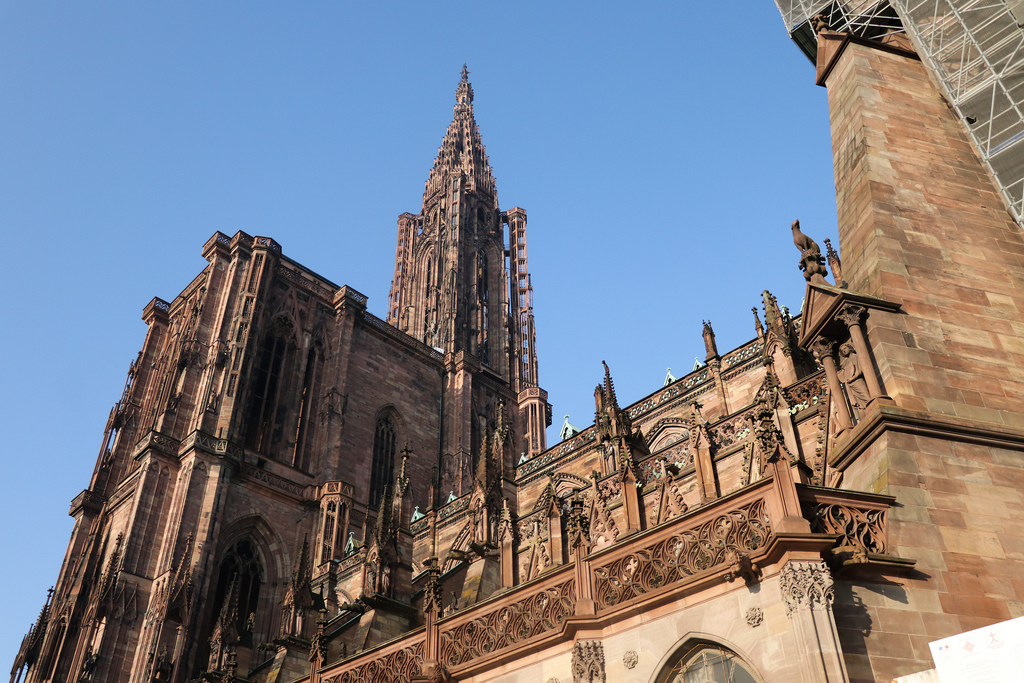
Each of the portals decorated with sculptures that are dedicated to a certain biblical story.



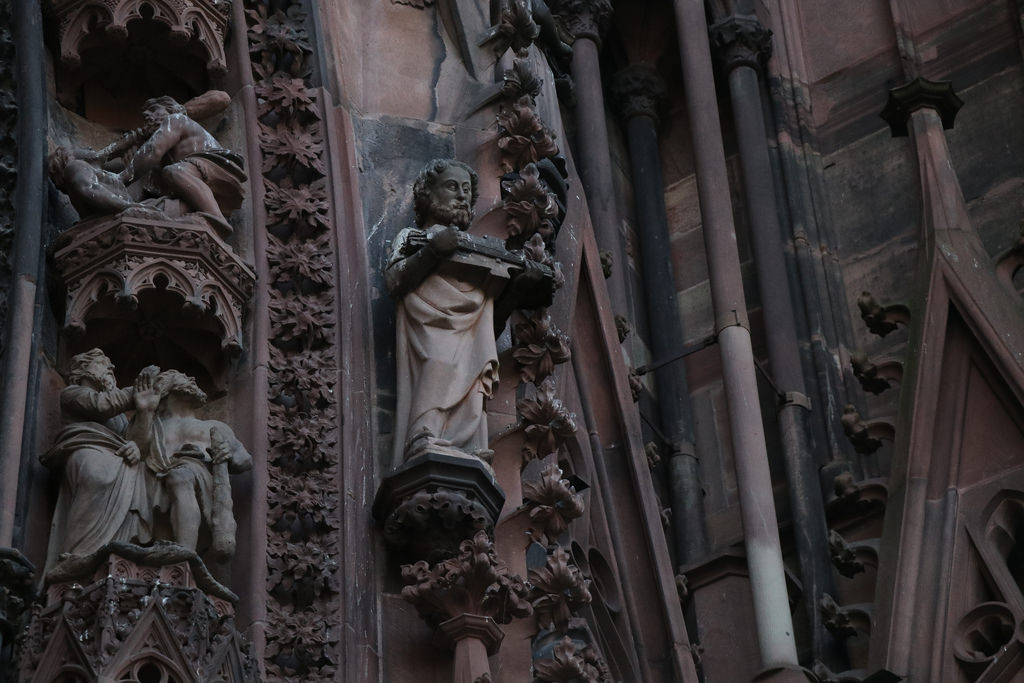
The Virgin and Child and the Magi.



The Tempter seducing one of the virgins. You can see snakes crawling behind the Tempter’s back.

Virtues piercing with a spear the vices represented by demons.

Three portals of the main entrance correspond to a biblical theme: the infancy of Christ, the redemption, and the Last Judgement.

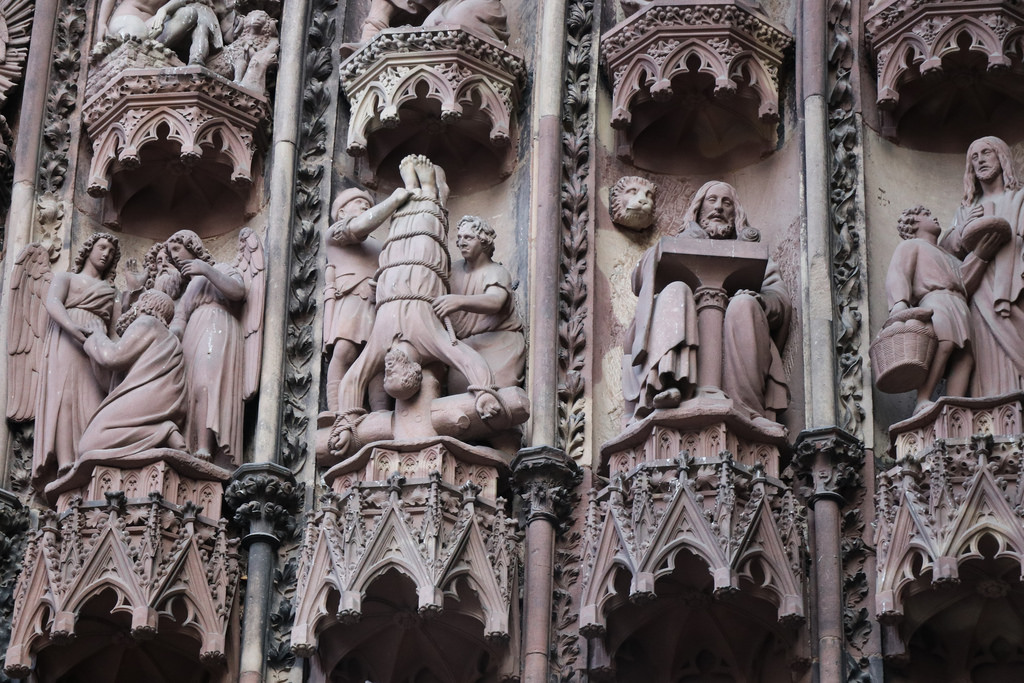
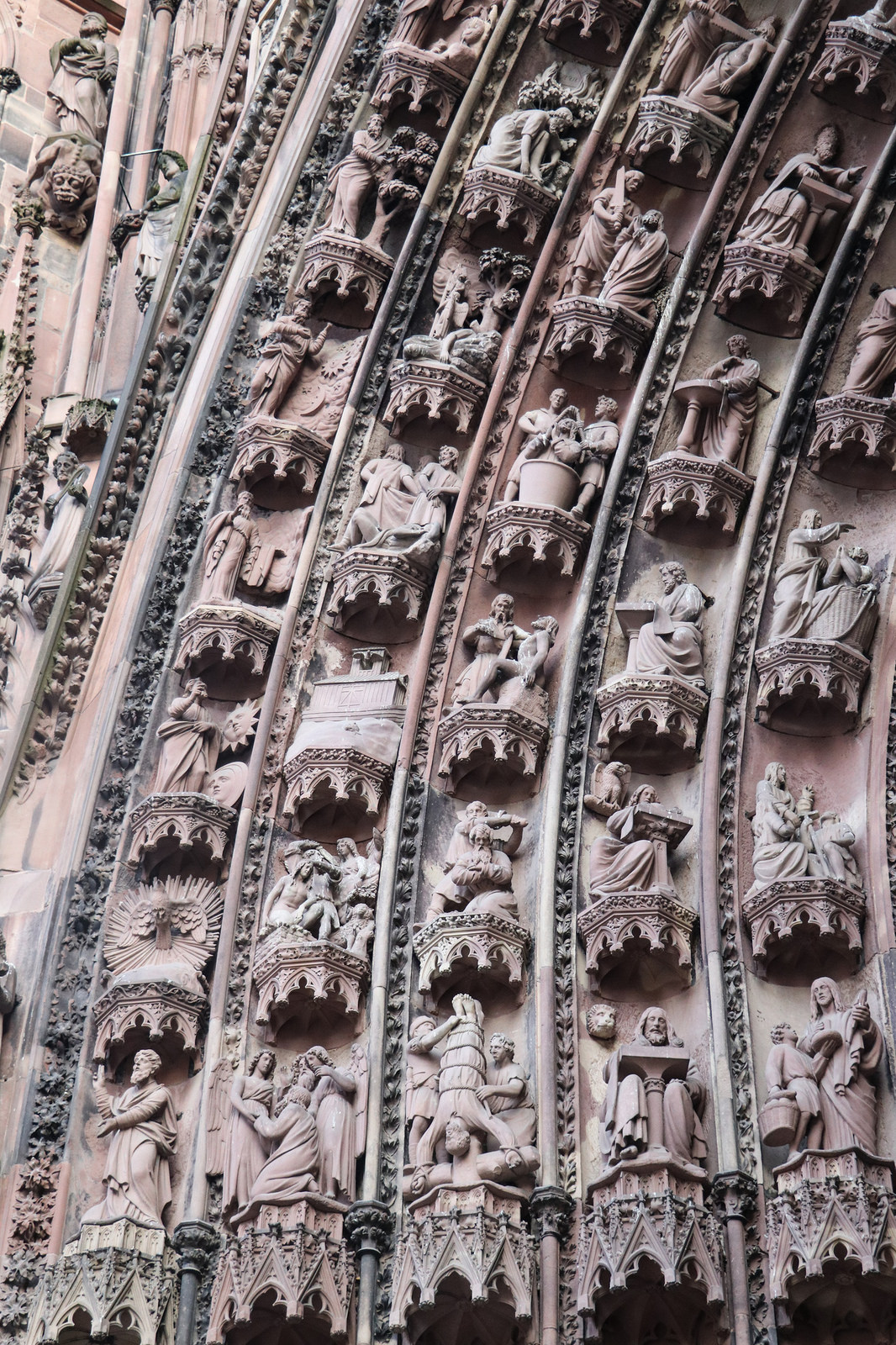

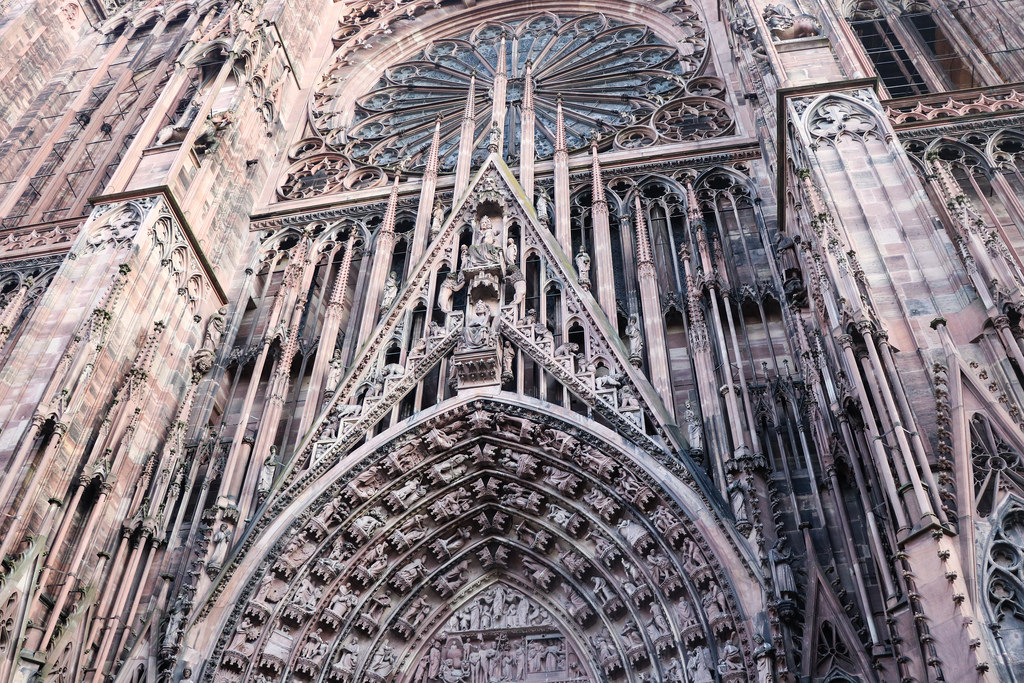
The attention to details is impressive, you can even see veins on a hand.

Every Gothic cathedrals has gargoyles or other anthropomorphic creatures.
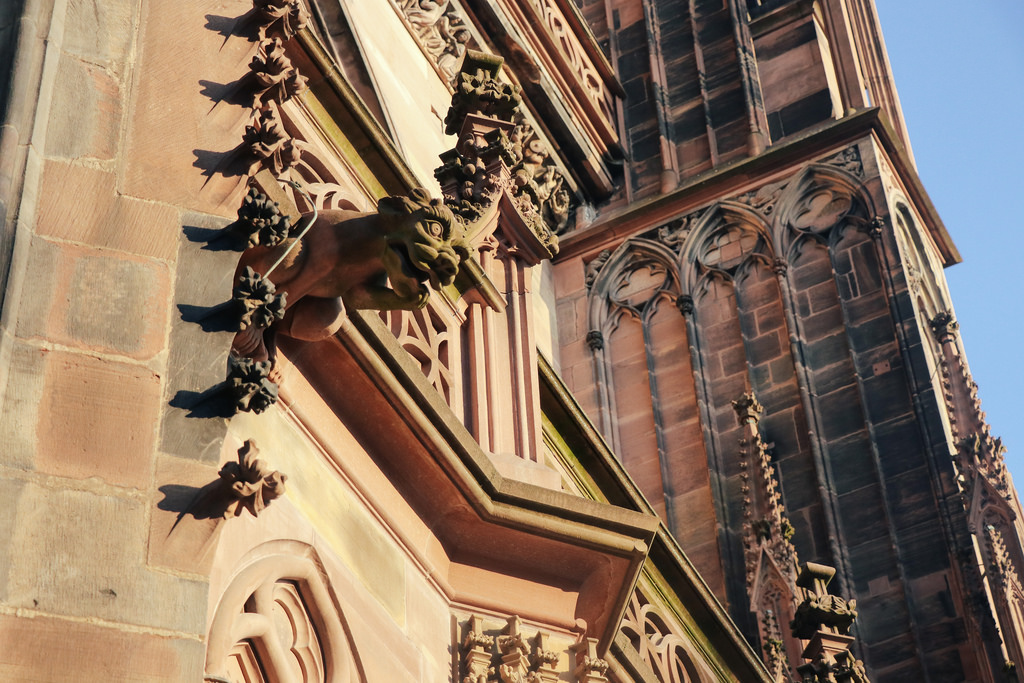
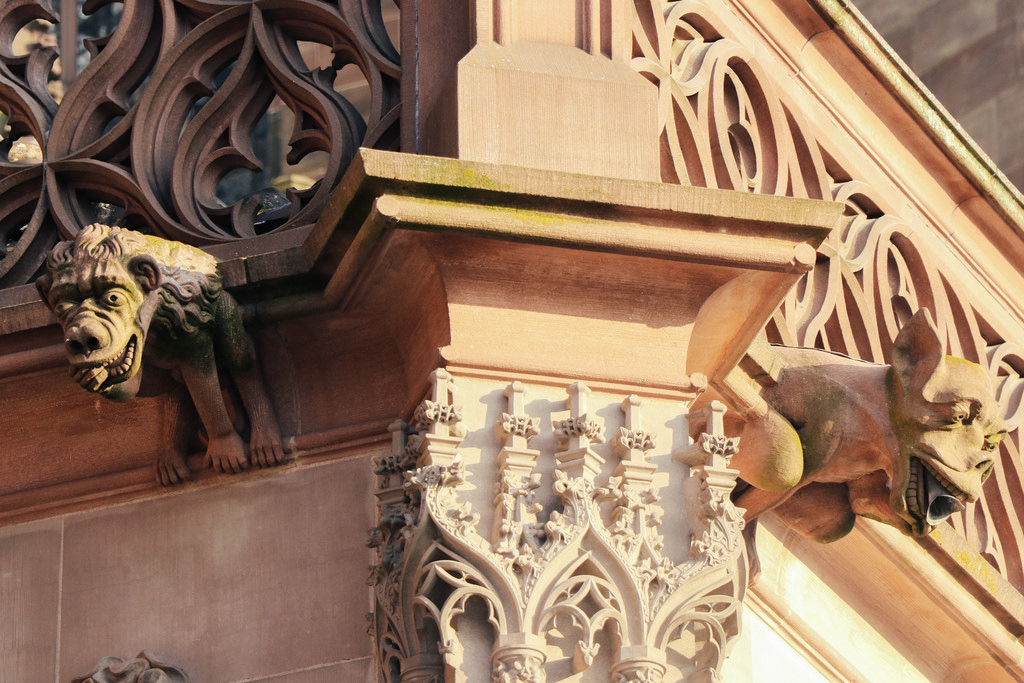
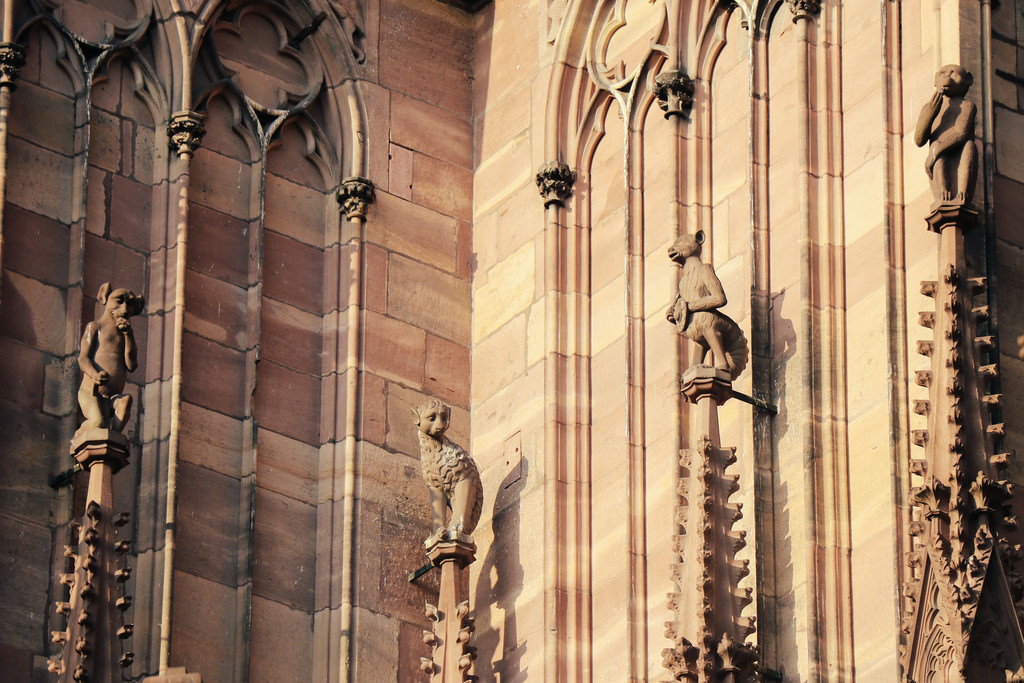

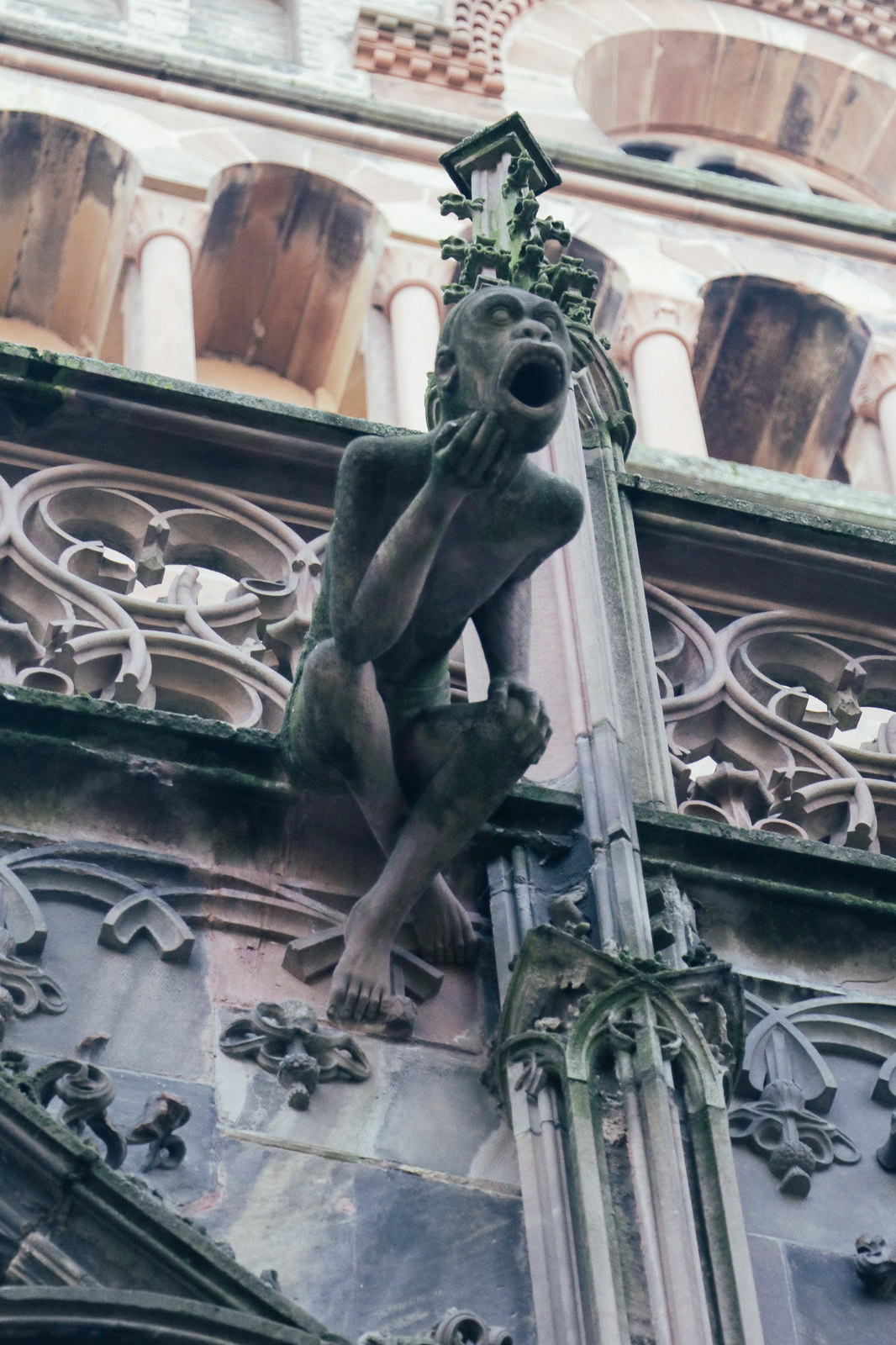
The northern portal is dedicated to Saint Lawrence, namely the scene of his execution: servants press Lawrence to a red-hot grate.
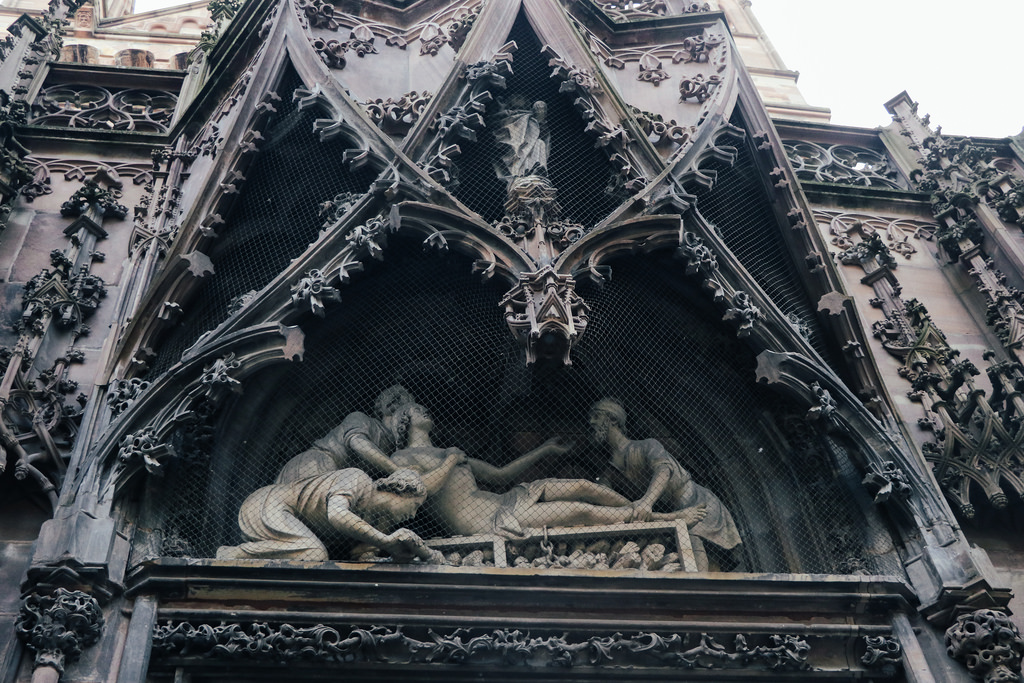
More details.
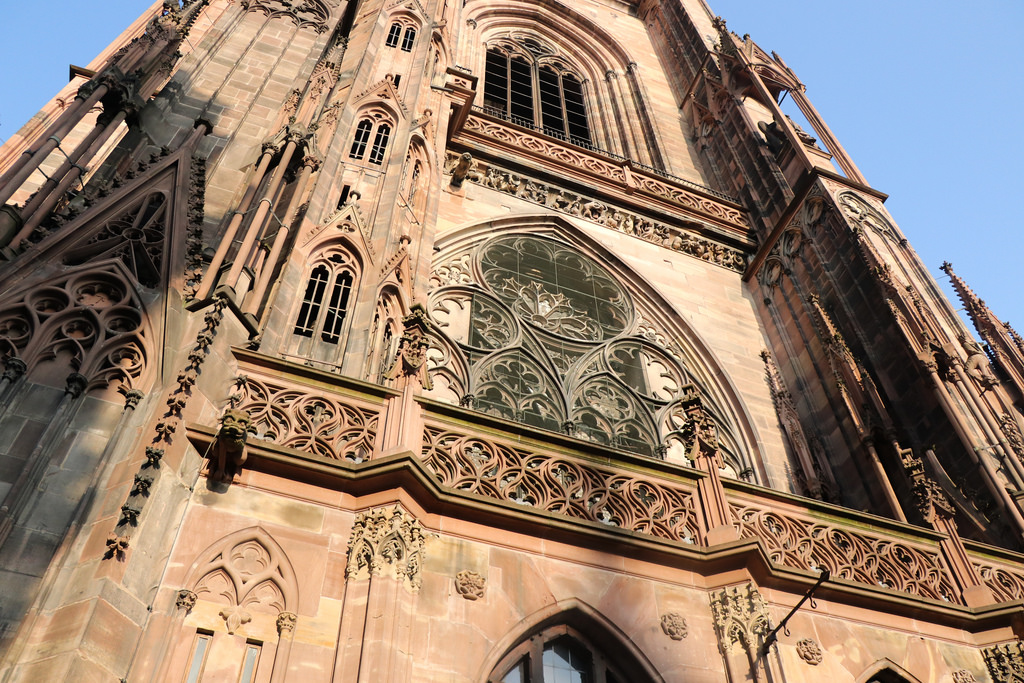
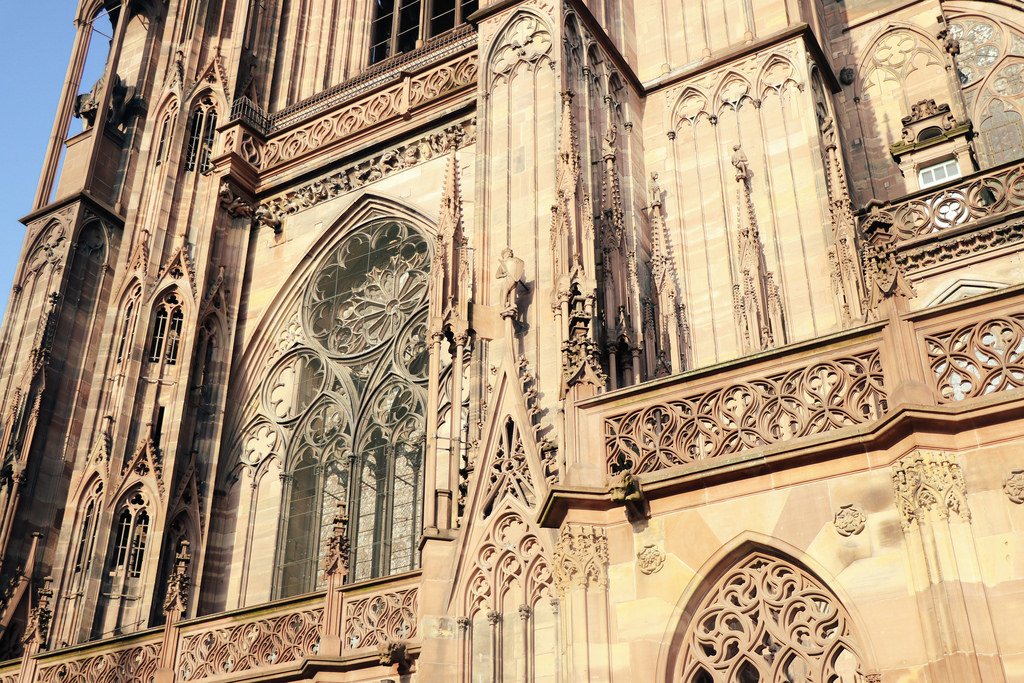






Inscriptions left on the walls in the 16th-17th centuries.
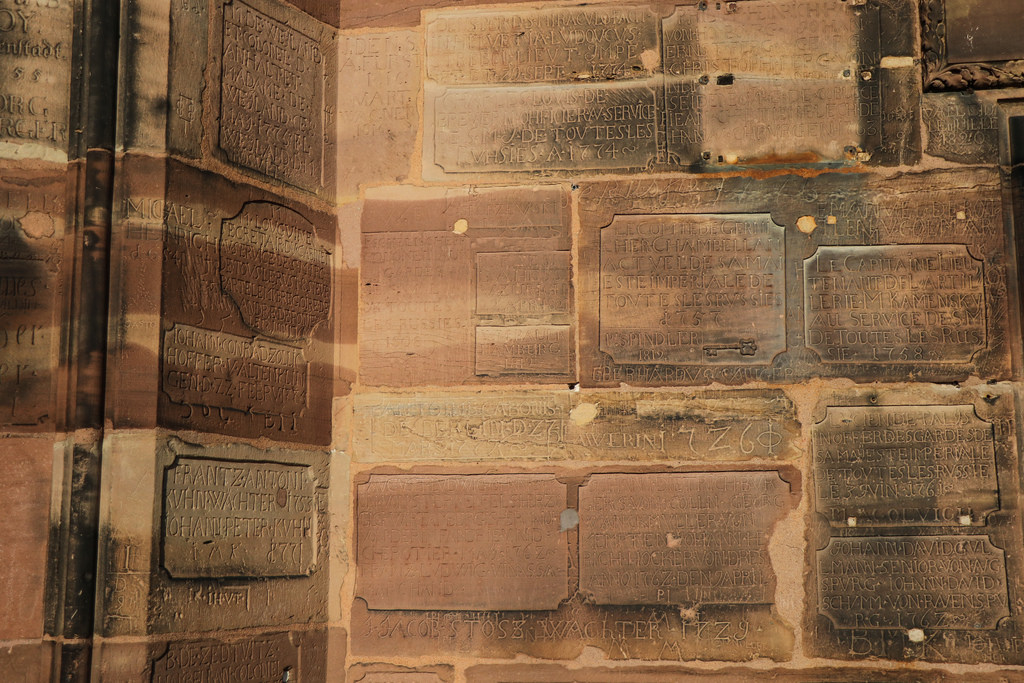
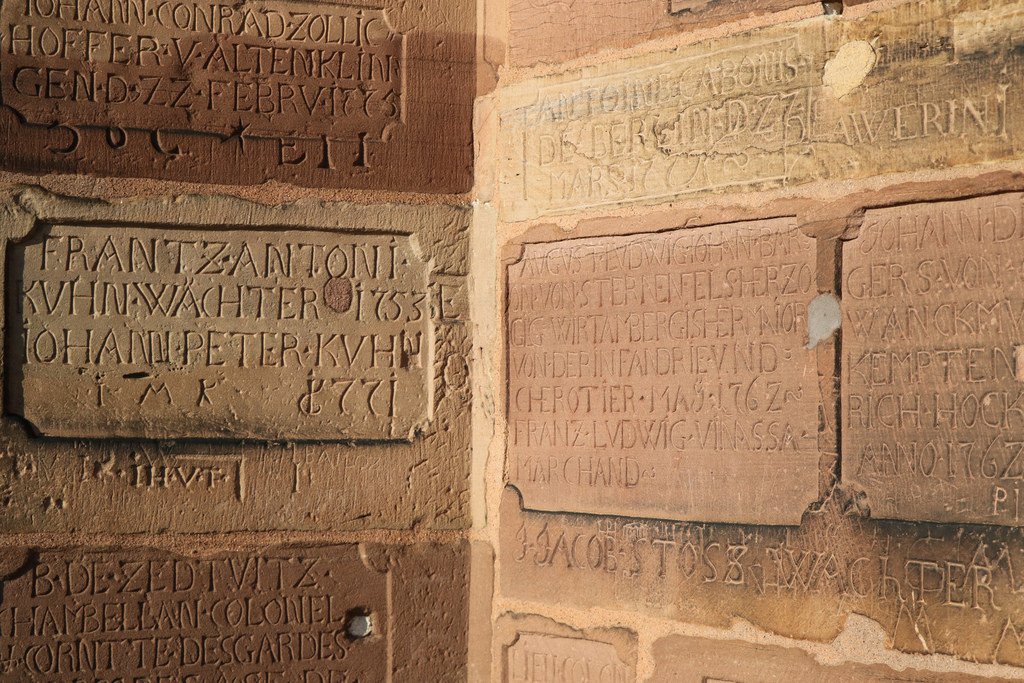
You can go up the stairs to the top of the cathedral for breathtaking views of the city. Goethe, who lived in Strasbourg, often climbed the cathedral to overcome his fear of heights.
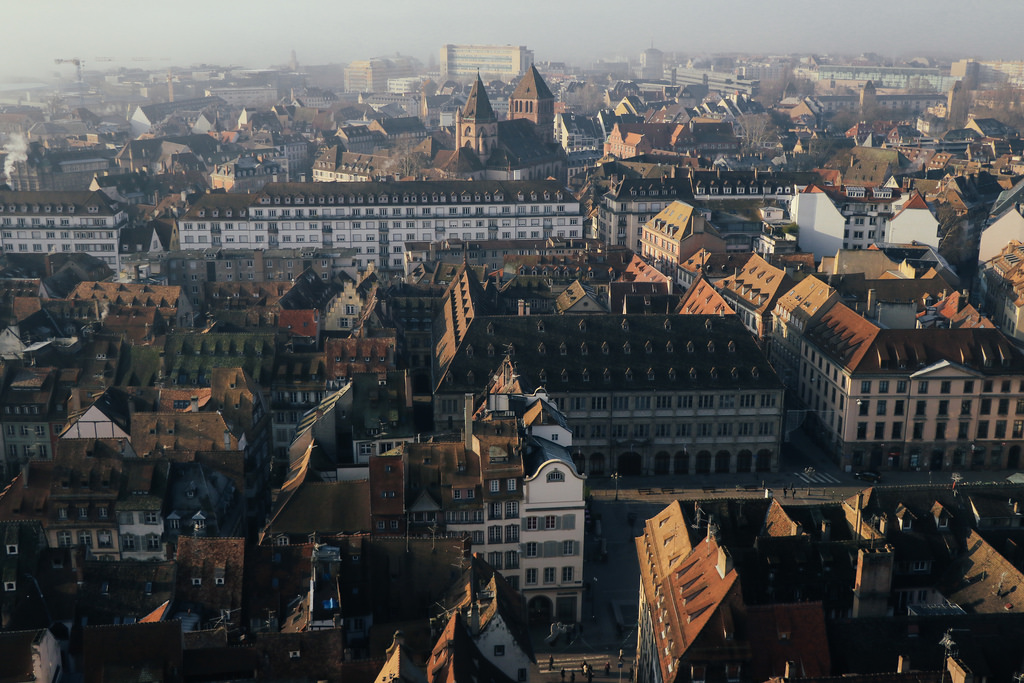
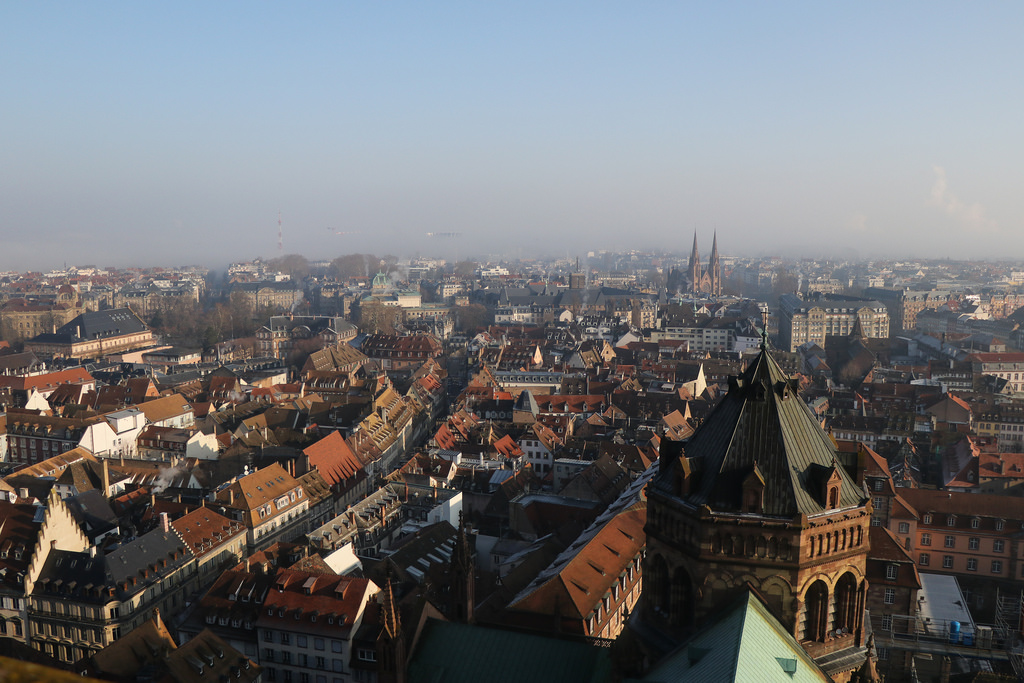
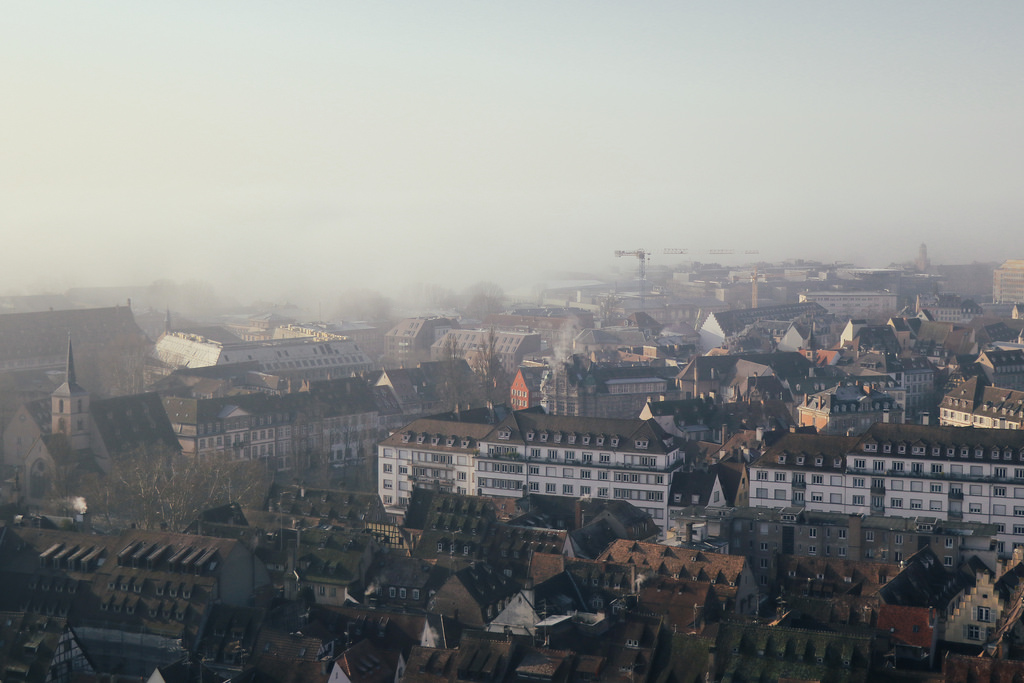

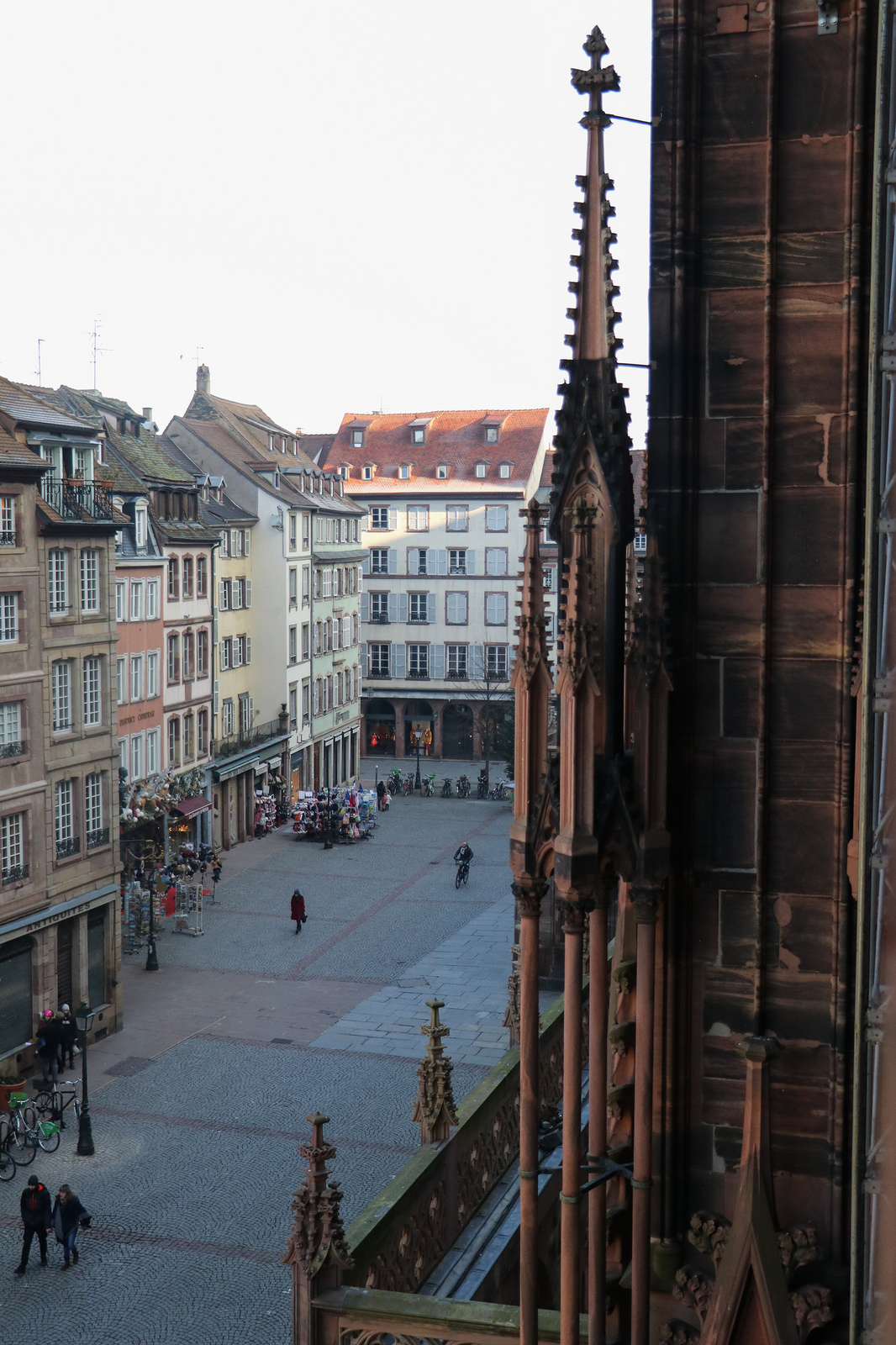
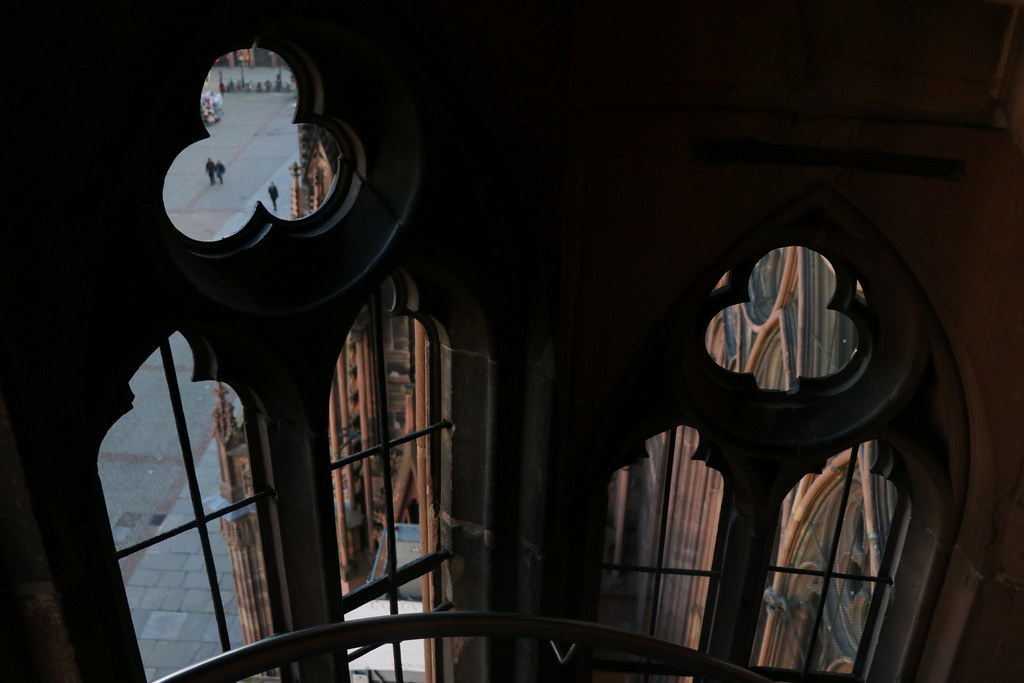
Inside you can see the Astronomical clock that shows the orbits of the planets. This is a unique mechanism for that time (18-19 centuries). The clock also shows the procession of the earth’s axis, which takes more than 25,000 years to rotate.
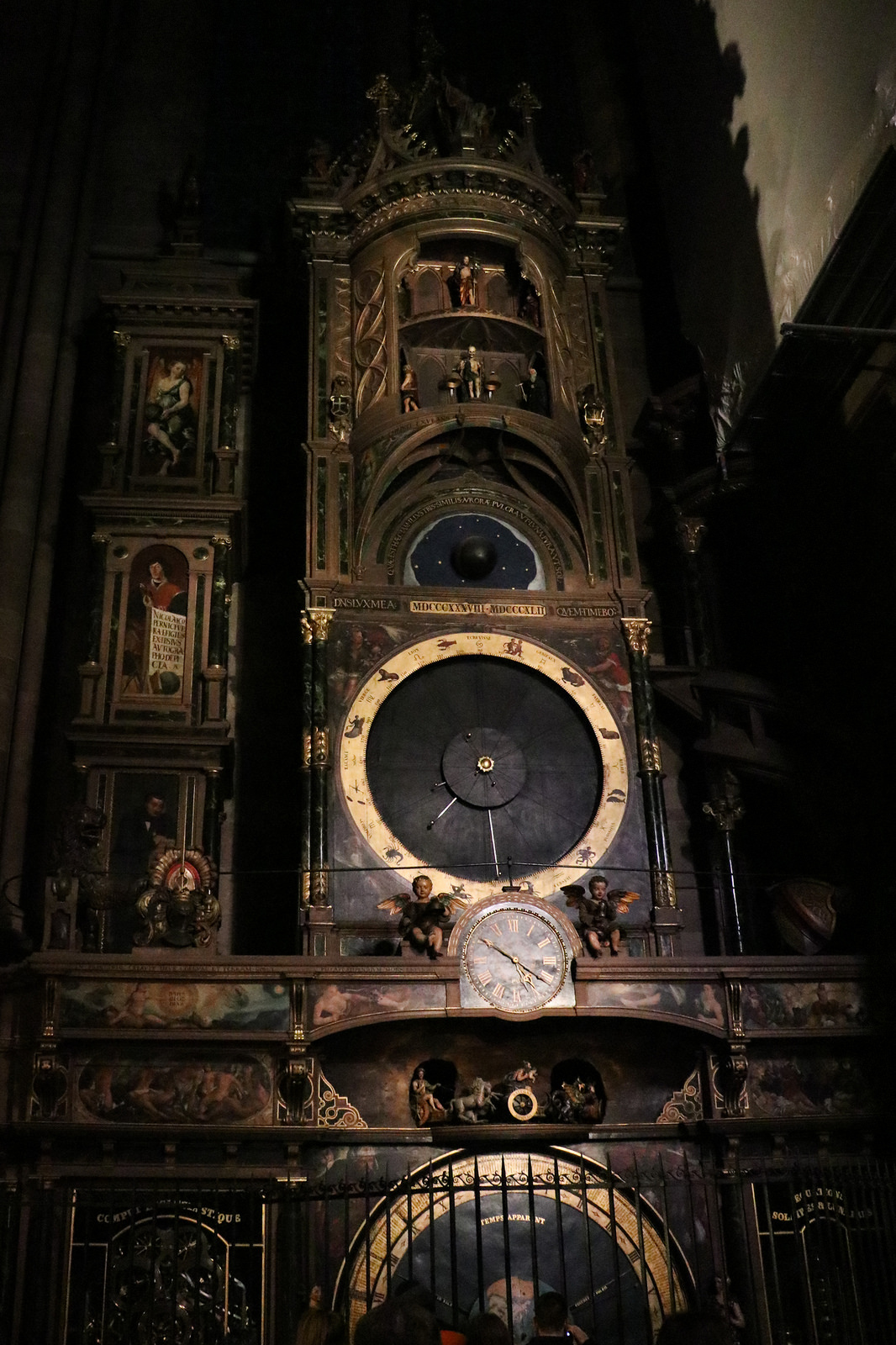
The pulpit of the 15th century.
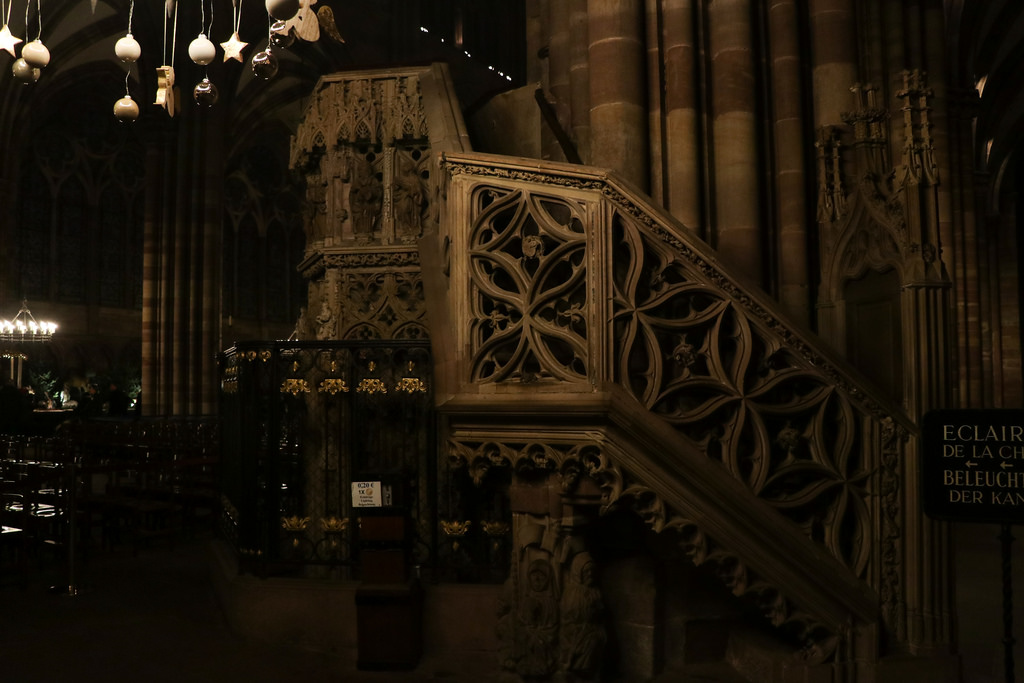
Pillar of the angels.
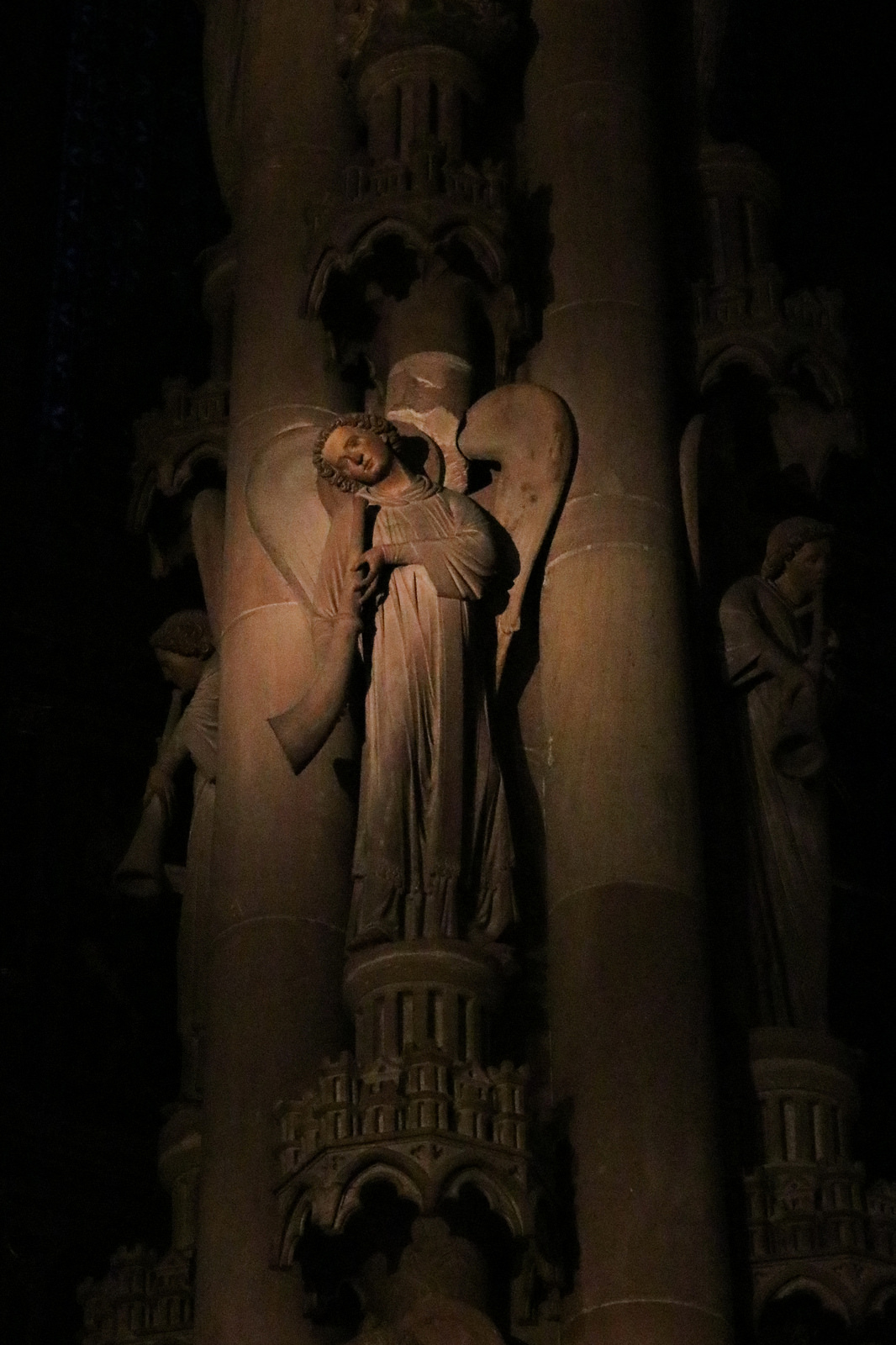

Altar of the 16th century.
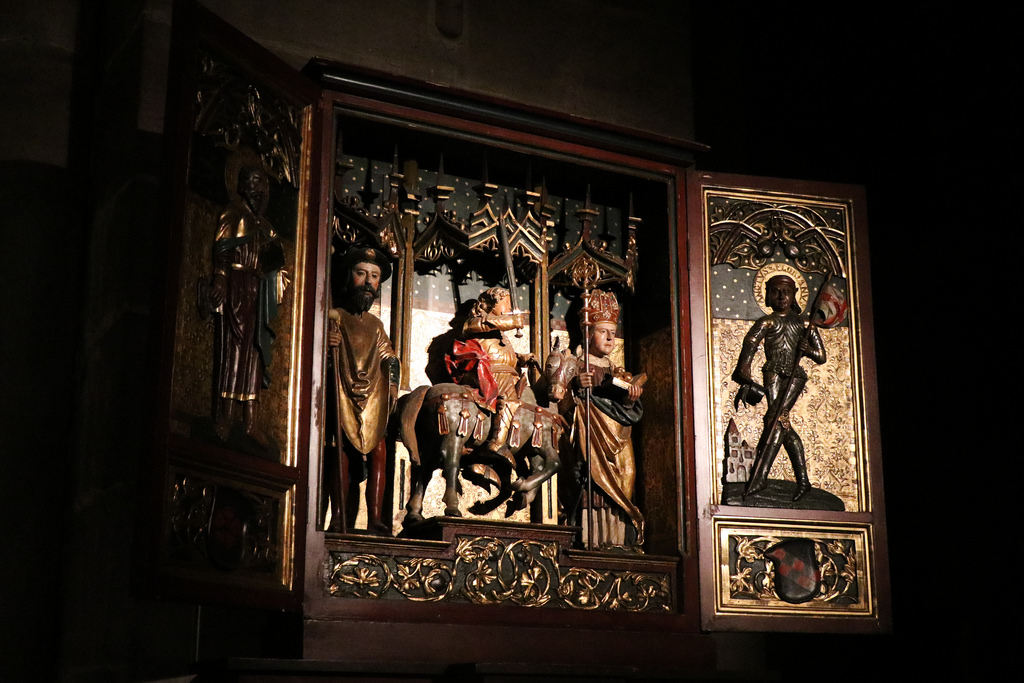
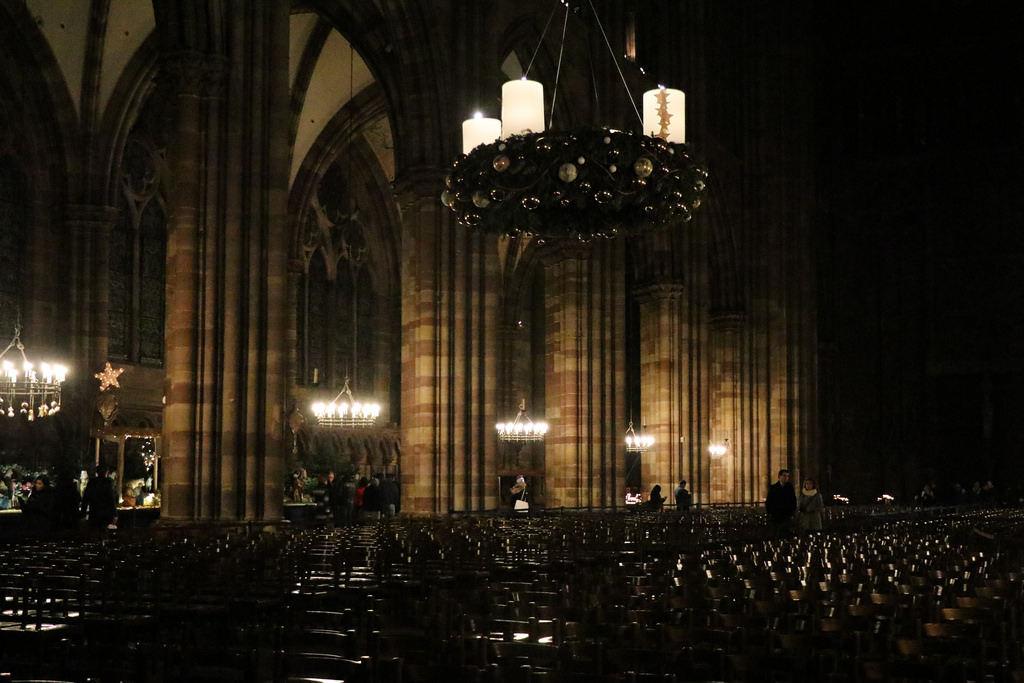
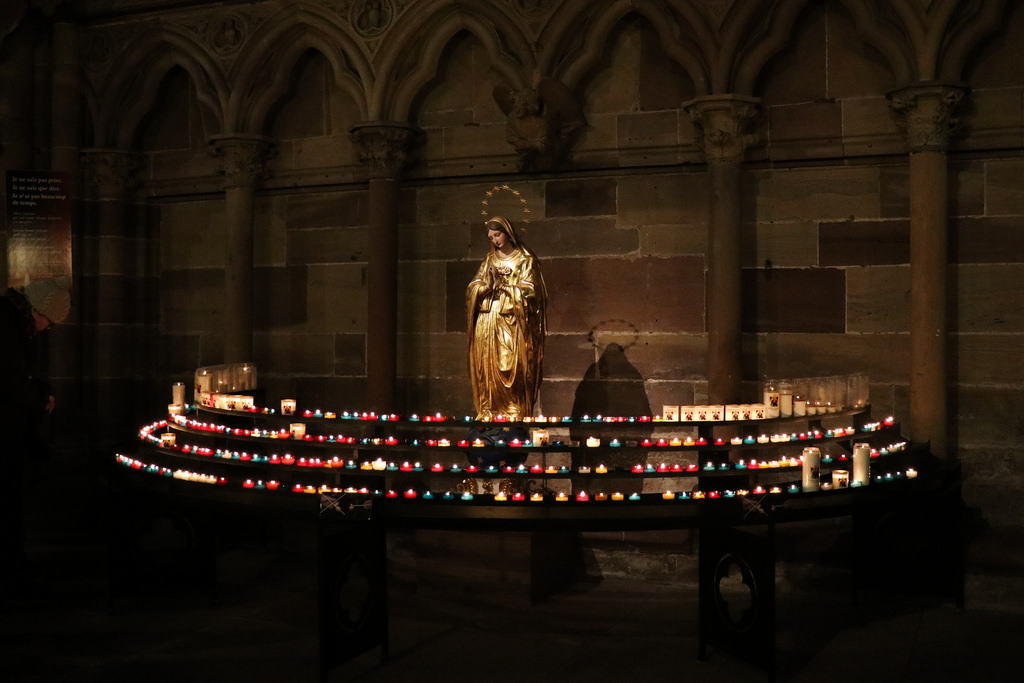
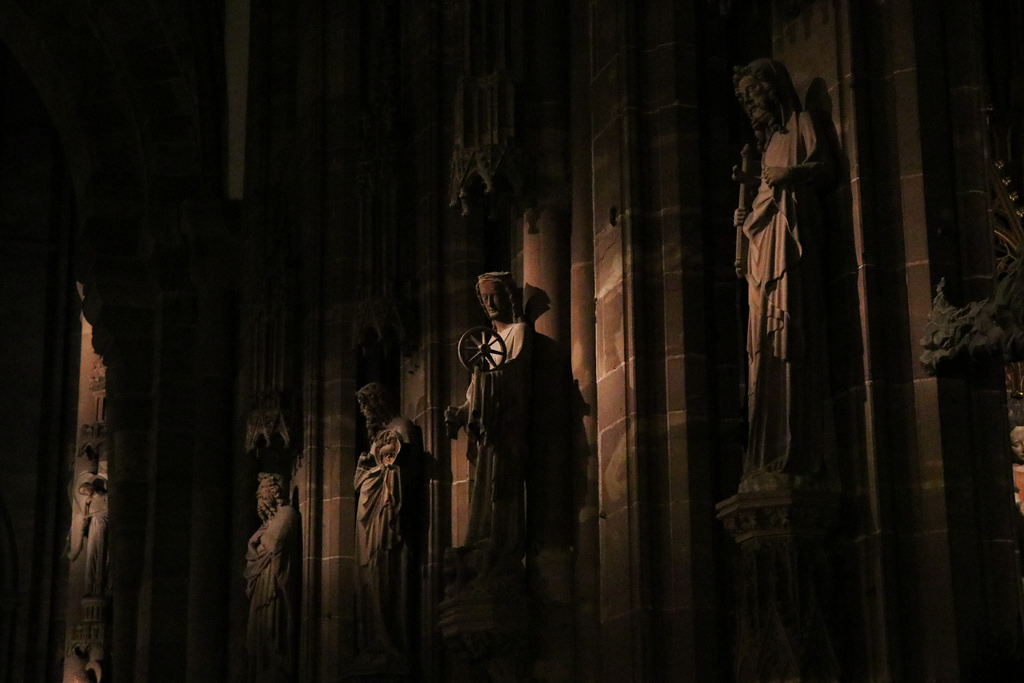
A composition of the birth of Jesus, set for Christmas.

Strasbourg Cathedral is one of the largest and most beautiful Gothic cathedrals in Europe.